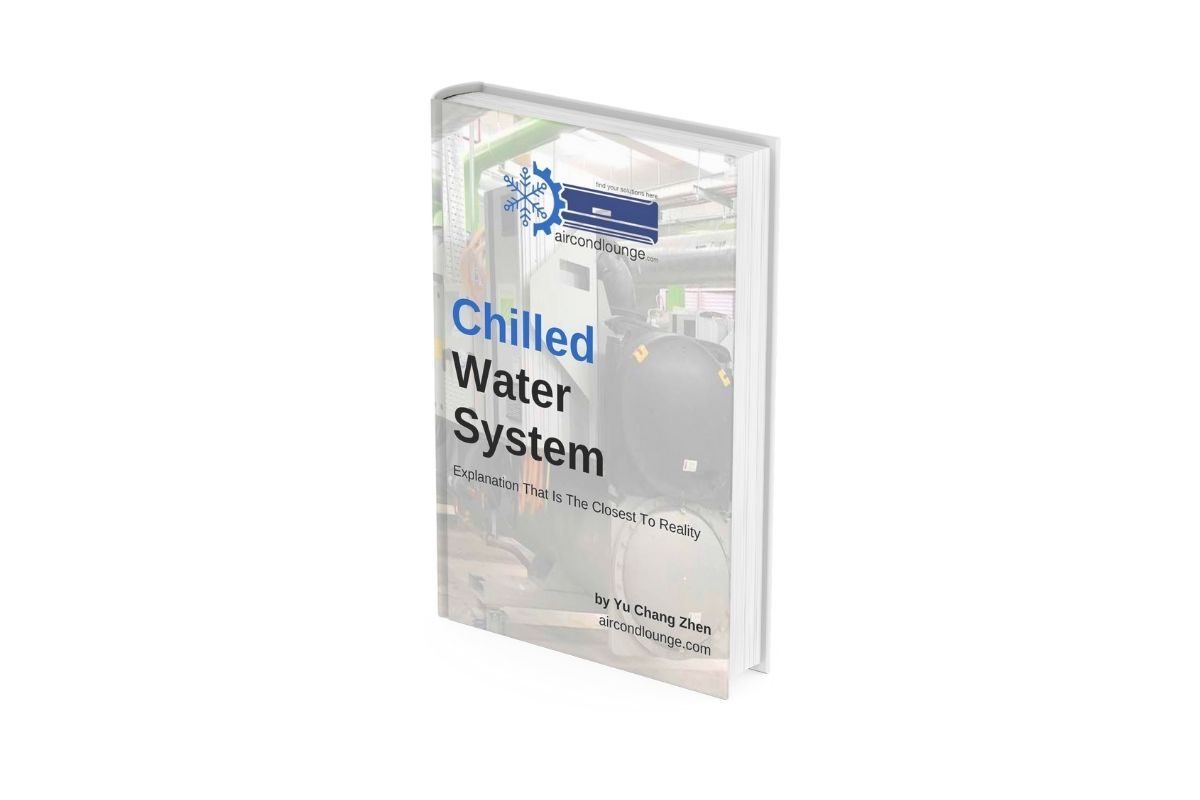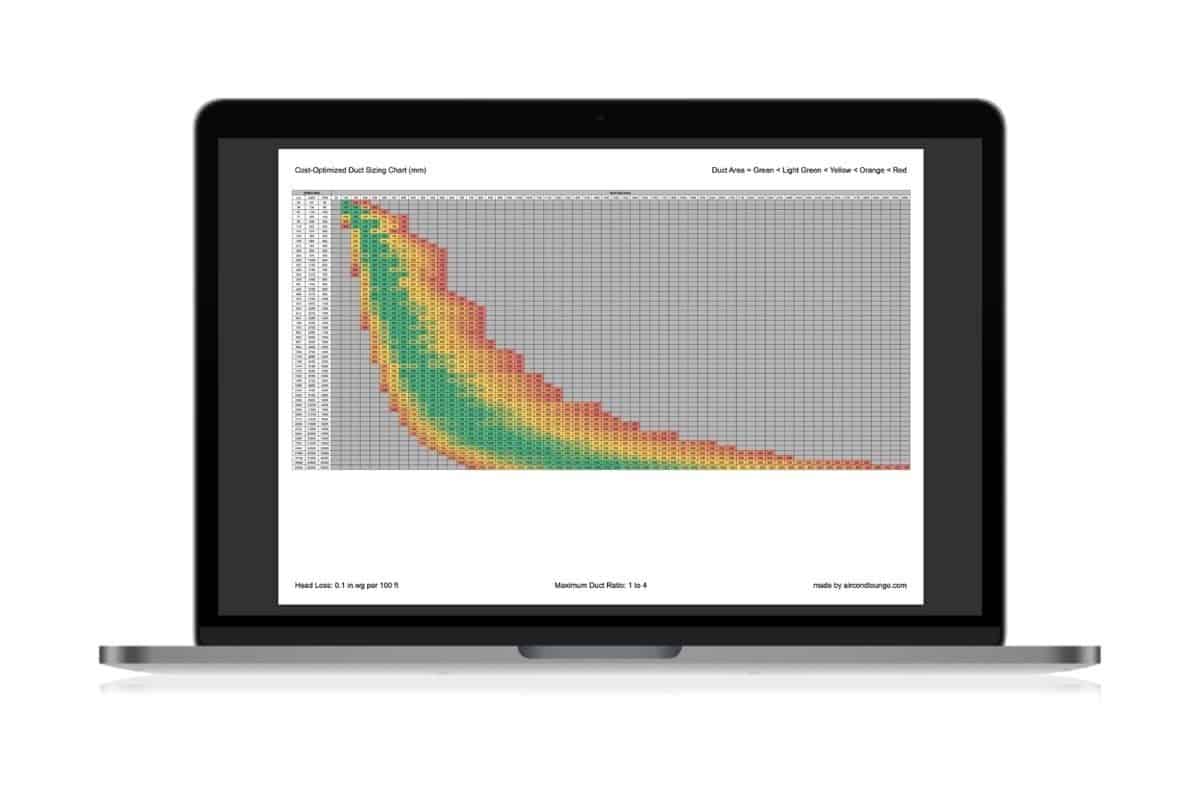9 Actions That Improve Your HVAC Design Skills
As design engineers, we have many things to learn about the HVAC system. Nowadays, things are moving so fast and we need to improve our skills fast enough to catch up. So, what actions you can take now to improve your design skills?
Attending courses and seminars do help to improve design skills. However, there are other things that may not seem obvious but are critical to the success of HVAC design engineers. Furthermore, they are actions that you can take now to start improving your design skills.
So, I put together 9 actions that I think are fundamentally helpful in improving your design skills. These actions are not easy tasks. Some of them require you to have a certain level of determination in order to make them happen. Nonetheless, success never comes easy.
1. Automate Repetitive Works
In production and manufacturing, automation is the norm. Manufacturers that don’t leverage technology to automate repetitive works are not competitive and they are well aware of that.
However, in the construction industry, we are still doing things the same old ways. It is not that people don’t want to automate their works but it is the lack of technological development and innovation.
While companies like Apple, Google and Tesla are using artificial intelligence and big data to do calculations, make schedules and run projects, we are still writing daily reports on whiteboards at the construction site.
While other design engineers are doing things mostly the manual way, you can outperform them by automating most of your boring repetitive works. For example, you can use the excel calculators in my Design Engineer Starter Pack to complete your design calculations much faster than your colleagues.
Other than using templates created by other people, you can be creative and develop your own templates so that you can get rid of repetitive works as much as you possibly can.
When I was a project and service manager, I have hundreds of customers to serve every week. While I have a junior to help me answer phone calls, I can’t be watching him answering every call. So, I spend days creating a master monitoring Google Sheets where he can update enquiries and I can monitor in real-time.
By the way, I really like using Google Sheets. I actually prefer Google Sheets over Microsoft Excel because it allows real-time synchronization. Many people working in the HVAC industry never heard of or use Google Sheets before. Hence, it is your chance to explore and do something differently.
2. Learn Rule of Thumbs
HVAC rule of thumbs get bad reps and they are often associated with oversizing equipment. However, cleverly using rule of thumbs can help you think faster and estimate better.
When it comes to using rule of thumbs, we often apply it to calculate the required cooling capacity of a project. But, many experts said that calculating cooling capacity by means of rule of thumbs is incorrect and I do agree.
However, rule of thumbs can be extremely accurate and efficient when it comes to small applications such as a room or a school hall. Mastering the art of using rule of thumbs can be extremely valuable. Heck, even Amazon is selling the HVAC rule of thumbs book.
Not just for the cooling capacity, there are a lot of other HVAC designs that can be quickly estimated using rule of thumbs. For example, the estimated total project budget based on cost per ton and cooling tower capacity based on chiller tonnage.
I’m sure you have had this experience before where your seniors or bosses are talking about some HVAC systems and they come out with tons of figures which you don’t understand. If you learn rule of thumbs, you’ll know that they are actually throwing out quick estimations to judge the HVAC system.
Don’t see rule of thumbs as bad practices but rather, use them wisely and you’ll improve your design skills much faster than you initially thought.
3. Ask Why Three Times
I learn this practice from Simon Sinek, the author of Start with Why which is available on Amazon. By pursuing a topic or question three times in the form of asking whys, we are able to understand the true fundamental lies behind it.
For example, if I ask why mold and fungus are growing in houses and buildings? A typical answer would be as follow:
- Because the humidity level is too high. Mold and fungus grow best when the indoor air is at 65% RH and above.
That’s a great answer. Additional information on the best humidity level for mold and fungus growth is provided. But, what if we continue to ask why the humidity level is too high? The answer to the second why could be as follow:
- There are no water leakages and the air handling units are in good shape. Hence, it is probably due to high chilled water supply temperature that is causing the cooling coil surface temperature higher than the dew point of the indoor air thereby discouraging condensation and dehumidification.
Excellent analysis, elimination and explanation. Now, we know that the HVAC system has too high of a chilled water supply temperature. But, why? The answer to the third why could be as follow:
- After speaking to the chief engineer, it appears that they increased the chilled water supply temperature in an effort to reduce the power consumption of their chillers. However, they did not check the cooling coil surface temperature. Now, they are aware of the issues and reverting the chilled water supply temperature back to the original setpoint.
By asking why three times, we usually get to the fundamental or the root cause of a problem. Speaking from my experience, most root causes are due to human errors, meaning people have ideas but they are not doing them correctly. So, problems occur.
Most people often stop asking why when they think they already found the root cause. But if you think about it, a compressor failure is not exactly the root cause of why an air conditioner malfunctions, we should find out why the compressor fails in the first place.
If you start to practice asking why three times, you’ll develop a curious behaviour which is one of the things that make a person successful in life.
4. Drop Your Egos
Many design engineers have great egos. Throughout my career working in the HVAC construction industry, I’ve personally met, seen and heard about the egos of design engineers.
I know how it feels when your works are judged by someone working on the construction site. However, if you think about it, those judges are actually good feedback to your works and thus, providing you chances to improve your design skills.
Many times, design engineers don’t accept recommendations from project engineers or contractors. They always think that contractors are trying to save cost or anything. While they do sometimes but, they may provide you with a different perspective.
A good design is not just about perfecting the calculations at the design stage but also about optimizing the cost at the installation and commissioning stages. After all, the client still has to pay for everything.
So, talk to project engineers more often. See what they have to say about your designs. Learn to embrace your mistakes and move on. If you do it, you’ll find yourself enjoying working more than before.
“The sense of progress is the key to having high job satisfaction.”
With each feedback, you’ll be improving and refining your design skills more and more. It is a compounding effect. Albert Einstein once said that compound interest is the eighth wonder of the world. So, does compound knowledge.
5. Experience Them Yourself
Many design engineers prefer to stay in the office rather than visit the construction site and see their designs. Back when I was working as a project engineer, design engineers’ site visit is a big activity. It seems like design engineers rarely visit the site.
Many times, bad design engineers are often associated with a lack of actual site experience. I bet you’ve heard it before. In fact, not seeing the actual stuff with your own eye really limits your design skills.
Do visit the construction site more often and don’t make it a big event. Just take your time to walk around and see what you’ve designed and how contractors are installing the system.
Most design engineers can’t do a site walk without the accompany of a project engineer or supervisor simply because they are not familiar with the building. If you’re able to do so, congratulations!
There are things that we can’t imagine if we are not at the site seeing them with our own eyes. As a project engineer, I’ve seen a lot of things with my own eyes but I sometimes also don’t expect certain problems to happen but they do and I’ve learned a lot from those problems.
During the commissioning stage, it is especially useful if you can stay at the site more often. You’ll get to see the result of your designs and how they actually work. For instance, did the pump head that you specified create just enough pressure or you’ve oversized it?
Sometimes, it is not that we simply design things. It is that we don’t even know there could be a problem. By experiencing the HVAC system by yourself, you can gain a different perspective which in turn improves your overall design skills.
6. Compound Your Knowledge
Not just design engineers but many project engineers as well as other people, in general, are not organizing their files and records properly. Filing your design knowledge is the same as compounding your design knowledge.
We all do lose memories over time. If you have not done the chilled water system for a few years, you might have already forgotten how to do some of the design calculations. Maybe you’re a senior now. So, are you going to ask your juniors to teach you?
File your design materials such as formulas, sample calculations, sample projects, charts, diagrams and tables. They are extremely useful. However, they need to be organized so that you can understand them a few years later when you needed them.
I was a project engineer and then, a senior project engineer in the HVAC industry for a total of 5 years. For the next two years, I was working on the hot water system. If I don’t have records of my previous works, I wouldn’t be able to remember so many things and create so much HVAC content on my website.
Warren Buffet reads 500 pages to build up his knowledge which he refers to as compound interest and Albert Einstein once said that compound interest is the eighth wonder of the world.
7. Read Online Articles and Books
When you’re reading this article, it implies that you already know how to use the internet to improve your HVAC knowledge and design skills. Many people are not leveraging the internet to stay competitive.
Articles and books are made by people who have many years of solid experience. Furthermore, articles and books are well-organized. They are effective in transferring knowledge from the author to the reader.
When we ask questions to our seniors, they don’t tend to explain them thoroughly. Perhaps, they don’t have the time to explain or they simply don’t have the skills needed to transfer knowledge effectively.
The ability to teach thereby transferring knowledge is a skill that needs to be learned. Your seniors are busy doing day-to-day work and thus, they are usually not good at teaching you the necessary skills. Also, why do they want to teach you so much?
Books such as Chilled Water System written by me contain consolidated information about the HVAC system. Not only you can gain tons of knowledge in a short period of time, but it’ll also put you ahead of everyone else who has the same experience as you do.

If you are not working in the digital/online industry, you may not know that Google uses an extremely sophisticated computer algorithm to sort online articles. Every time you Google something, the first few articles are the best articles available on the internet.
Compared to a few years ago, online articles today are much more trustworthy and accurate. In the future, they only get better and better. Hence, we should leverage the conveniences given by the digital world to improve our design skills.
8. Build Smart Charts
Throughout my career working in the HVAC industry, I’ve learned to improve my productivity by creating and building my own smart design charts. These charts are meant to help me find results quicker than ever before.
Think of them as the weapons and armor you’ve got in video games. You enhance them, upgrade them and refine them as you grow your character. Isn’t it the same thing? I call them Designer’s Tools. Sound cool to me.
For example, ducts have several forms that match with an airflow requirement. However, there are one or two duct forms that use the least amount of sheet metal and thus, the cheapest to produce.
Using software or an excel sheet won’t give you the most cost-optimized duct sizes. Hence, I started to think about how can I create a chart that allows me to find the best duct size within seconds. In the end, I created this Cost-Optimized Duct Sizing Chart.

That’s just one of my smart charts. You can do it on your own as well and start building your very own smart charts. They will stay with you forever and you can fine-tune them once in a while when you gain new experience and knowledge.
9. Have a Tea Break with Your Boss
Often, junior engineers are afraid to talk to their bosses. Well, I would suggest you don’t if you are just starting out because you both won’t have much to talk about.
Set it as one of your career goals to have a tea break with your boss because when you can, it means that you’ve learned enough about the company as well as the HVAC industry and design-related problems.
Usually, your bosses or managers, or seniors talk about new projects, design problems and client’s problems during lunchtime and tea breaks. They may be discussing certain design ideas and new technology. If you can blend in, you know that you’ve taken your design skills to the next level.
On a side note, do join them whenever you can. You’ll learn a lot also by simply listening to their conversation. Besides, they often give you some advice and lectures along the way and it is a great way to improve your design skills.
It is fundamental that when we know more about the HVAC industry, we can design a better HVAC system. Improving design skills is not just about knowing all the calculations, formulas and hacks. It is also about understanding the industry and the expectation as well.
Furthermore, learning from other people’s mistakes can save you a lot of time and many successful people agree that it is one of the best ways you can do to move towards your success.
If you have anything to add (or ask) about this topic, leave a comment down below!










